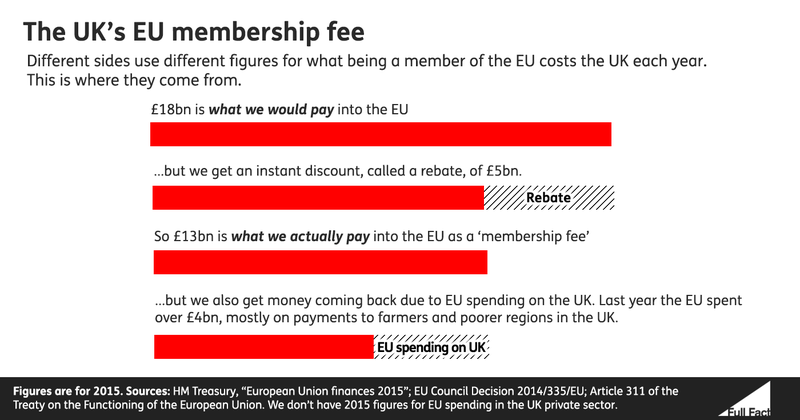The claim that the UK sends £350 million per week to the EU is wrong.
This figure does not include a rebate, or discount, on what the UK has to pay. In 2014 the UK would have paid £18.8 billion without the rebate but ended up paying £14.4 billion.
The estimate for 2015 is £12.9 billion. This is £248 million per week, or £35 million per day.
How much does the UK receive back?
The UK then gets money back in grants and payments from the EU. Some flow through the public sector, and mainly go to support farmers and poorer areas of the country. In 2015 this was estimated at £4.4 billion, or £85 million per week. More money, such as research grants, goes directly from the EU to the private sector.
Even so, the UK does get back less than half of the money it pays to the EU in most years.
What can be done with the money?
Neither the money that goes back to public sector nor the private sector is fully within the government’s control. If we left the EU we might choose to spend it all differently, or spend the same amount ourselves on farmers, poorer regions and the rest—leaving less to spend on building hospitals.
Assuming that every penny available is spent on hospital building, then anything from half a hospital to three hospitals a week might be built.
If instead you spent every penny currently sent to the EU hiring hospital nurses, you could get anywhere between 400,000 (Band 2 nurses outside London) and 80,000 (Band 8a nurses based in London). There are currently 285,000 nurses in the English NHS.

